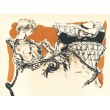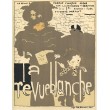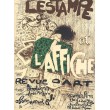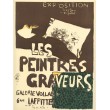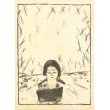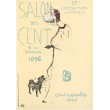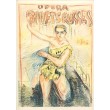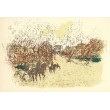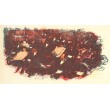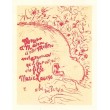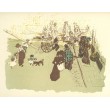Žádné díla
Kategorie
- grafiky/tisky
- obrazy
- kresby
- plakáty
- fotografie
- exlibris
- bibliofilie
- knihy/katalogy
- starožitnosti
- sochy/plastiky
- sklo
-
Hnutí
- abstrakce
- art-deco
- čs.avantgarda/moderna
- expresionismus
- fauvismus
- impresionismus
- kubismus
- naivní umění
- op-art
- poetismus
- pop-art
- realismus
- secese
- sociální kritika
- soudobá tvorba
- surrealismus
- světová avantgarda/moderna
- Škola prof. Albína Brunovského
- Škola prof. Zdeňka Sklenáře
- Škola prof.Julia Mařáka - mařákovci
- Žánr
- Zprávy/NEWS
- Doporučujeme
Nová díla
-

Johanka z Arku
4 114 Kč -

Kvetoucí strom
2 662 Kč -

Hvězdy
4 598 Kč
Hnutí
- abstrakce
- art-deco
- čs.avantgarda/moderna
- expresionismus
- fauvismus
- impresionismus
- kubismus
- naivní umění
- op-art
- poetismus
- pop-art
- realismus
- secese
- sociální kritika
- soudobá tvorba
- surrealismus
- světová avantgarda/moderna
- Škola prof. Albína Brunovského
- Škola prof. Zdeňka Sklenáře
- Škola prof.Julia Mařáka - mařákovci
Žánr
NEJŽÁDANĚJŠÍ UMĚLCI
- Anderle Jiří
- Augustovič Peter
- Benca Igor
- Beneš Karel
- Bím Tomáš
- Born Adolf
- Brun Robert
- Brunovský Albín
- Boštík Václav
- Bouda Cyril
- Bouda Jiří
- Braque Georges
- Brázda Jiří
- Buffet Bernard
- Cézanne Paul
- Čapek Josef
- Čápová Hana
- Dalí Salvador
- Demel Karel
- Dudek Josef
- Dufy Raoul
- Effel Jean
- Felix Karol
- Filla Emil
- Giacometti Alberto
- Grosz George
- Chagall Marc
- Istler Josef
- Janeček Ota
- Jiřincová Ludmila
- Kandinsky Wassily
- Kĺúčik Peter
- Komárek Vladimír
- Kulhánek Oldřich
- Kupka František
- Lada Josef
- Lhoták Kamil
- Matisse Henri
- Miró Joan
- Mucha Alfons
- Muzika František
- Picasso Pablo
- Pileček Jindřich
- Reynek Bohuslav
- Sukdolák Pavel
- Suchánek Vladimír
- Svolinský Karel
- Šíma Josef
- Špála Václav
- Švabinský Max
- Švengsbír Jiří
- Tichý František
- Toulouse-Lautrec Henri de
- Toyen
- Trnka Jiří
- Váchal Josef
- Vik Karel
- Warhol Andy
- Zábranský Vlastimil
- Zoubek Olbram
- Zrzavý Jan
Seznam děl umělce Bonnard Pierre
Pierre Bonnard (1867-1947) je další z významných francouzských impresionistů, který má své opodstatněné místo i na stránkách internetové aukční galerie ArtBohemia. Navíc s osudovými veletoči - ze Sorbonny, kde studoval práva, zběhl k malířství; přátelil
Pierre Bonnard (1867-1947) je další z významných francouzských impresionistů, který má své opodstatněné místo i na stránkách internetové aukční galerie ArtBohemia. Navíc s osudovými veletoči - ze Sorbonny, kde studoval práva, zběhl k malířství; přátelil se s rebely Gauguinem a Redonem, bydlel s Vuillardem, společně Toulouse-Lautrekem nasával atmosféru hospůdek na Montmartru (Bonnardovy pařížské obrázky vynikají neopakovatelnou atmosférou). Po secesním období, ze kterého vyniká plakát na šampaňské a cyklus pro La Blanche Revue, dospěl k syntéze fauvismu a impresionismu. Spoluzaložil skupinu Les Nabis (Nabisté = proroci). Na svých častých cestách se věnoval krajinomalbě. Vyhledávaným malířem se stal především pro své dekorativní obrazy zátiší měšťanských interiérů a intimních scén s ženskými akty. viz http://www.artbohemia.cz/blog/index.php/ArtBohemia/aktuality/ ***** [Bonár], Pierre, *13.10.1867 – †23.1.1947, francouzský malíř a grafik, spoluzakladatel skupiny Nabis (1889). Dospěl k osobité syntéze fauvismu a impresionismu, malbě dekorativního pojetí, zachycující pod vlivem japonského dřevořezu motiv ve výseku a jemné barevnosti. Autor akvarelů a krajin, zátiší a intimních pohledů do interiérů. Vynikal jako ilustrátor a autor plakátů pro Blanche Revue. http://www.cojeco.cz/index.php?id_desc=10975&s_lang=2&detail=1 ***** 1867 (Fontenay-aux-Roses-FRA) - 1947 (Le Cannet-FRA) Umělecké směry: Post-Impresionismus, Les Nabis Země: Francie Francouzský malíř. 1885-88 studoval na Sorbonně práva, ale 1888 přešel na studium malířství. Navštěvoval Académie Julian spolu s E. Vuillardem, M. Denisem a P. Sérusierem a zároveň École des Beaux-Arts, kde marně usiloval o získání římské ceny. 1888 se seznámil v Pont-Ayenu s P. Gauguinem, jehož umělecké názory mu byly blízké; studoval tehdy umění Dálného východu a pokoušel se o plošnou obrysovou zkratku. Když dosáhl úspěchu plakátem na šampaňské víno, vzrostlo jeho sebevědomí a rozhodl se definitivně věnovat se malířství. Od 1890 bydlel společně v Rue Pigalle s Vuillardem a Denisem. Seznámil se s H. Toulouse-Lautrecem a hledal s ním motivy v zábavných podnicích na Montmartru. Připojil se ke skupině Les Nabis; když vystavil pět obrazů na první skupinové výstavě v Salónu nezávislých, dostal přezdívku "japonský nabi". Navštěvoval také galerii Otce Tanguyho, kde se diskutovalo o novém umění; Bonnard zastával Gauguinův názor, že malba má být především dekorativní. 1893 měl první výstavu v galerii Durant-Ruel. Spolupracoval s Revue Blanche a spřátelil se s 0. Redonem, který ho zasvětil do techniky litografie a ovlivnil jeho ilustrace k básním P. Verlaina. Od 1903 vystavoval také v Podzimním salóně. 1907 cestoval do Belgie, Holandska, Anglie, Itálie, Španělska a Tuniska. Od 1912 pobýval každý rok několik měsíců ve Vernonetu, kde si koupil chalupu. 1913 cestoval s Vuillardem do Anglie, Holandska a Německa. První světovou válku strávil, soustředěn na svou práci, s St.- Germain-en-Laye. 1930-38 bydlel v Le Cannet u Cannes. V posledním roce dokončil nástěnnou malbu v kostele v Assy. Bonnard přejal od impresionistů techniku a snahu zachytit čistými barevnými tóny hru světla a atmosféry. Nešlo mu však o postižení okamžikového vjemu, nýbrž o vyjádření obecné povahy jevu, a proto na jediném obrazu pracoval celá léta, nežli se mu podařilo dokonale vystihnout svou uměleckou představu. Také jeho barevná skvrna se liší například od Monetovy; je plošší a dekorativnější a v koloritu dominují pro Bonnarda charakteristické žluti a oranže. V devadesátých letech maloval drobné výjevy z pařížského pouličního života; kolem 1904 vznikly první obrazy Bonnardova "intimismu", prosté motivy z měšťanských interiérů, ženy u toalety a zátiší, jimiž vzbudil zájem u publika a stal se vyhledávaným malířem. Po cestách do ciziny se věnoval více krajinomalbě. Bonnardův měšťanský intimismus představuje kvintesenci francouzského sensualismu a koloristické tradice; po první světové válce silně působil na moderní malbu nejen ve Francii, ale i ve střední Evropě. Zobrazit galerii autora. Zdroj informací: Encyklopedie světového malířstvi - Autorský kolektiv pod vedením PhDr. Sávy Šabouka DrSc.; nakl. Academia ČSAV 1975 http://www.artchiv.cz/GALERIE/MALIR/10080--Pierre-Bonnard.html?bio=full ***** Pierre Bonnard was born October 3 in France in 1867, and educated in the law, Pierre Bonnard decided to become an artist in 1888, attending art school even as he practiced law. By 1890, he was painting full time. Pierre Bonnard's early work was created in the climate of Symbolist thought. During the 1890's, he was a member of the Nabis, a group of artists under the influence of Paul Gauguin and Paul Sérusier who sought to restore a purely decorative dimension to painting. Emphasizing flat areas of color and strong lines, Bonnard painted small interiors, nudes and café scenes as well as large decorative works, tapestries, and graphics. By 1910, Pierre Bonnard turned away from intimate works and left Paris for the south of France. By 1915, he had changed the pictorial structure in his paintings without losing the strong color, changes that reflected Cubism. The subjects are always simple, but he rendered a sun-drenched landscape or a table laden with fruit and flowers with luminous color and intriguing compositions. From the end of the 1920's until his death, Bonnard's subject matter hardly varied. He painted still lifes, self-portraits, his wife Marthe, seascapes, and views of his garden at Le Cannet, all with intense color. His subject was always private life and fragile intimacy in the bedroom, the dining room, the bathroom, and the garden, a life in which Bonnard was both voyeur and participant. He also used the image, clothed and nude, of his wife Marthe who never seemed to age over the decades that she posed for her husband. She appears in the garden, in the dining room, reflections in mirrors and while in the bathtub. Pierre Bonnard died January 23, 1947 in Le Cannet, France. In: http://www.georgetownframeshoppe.com/pierre_bonnard_biography.html ***** The following review of the Bonnard retrospective held at the Museum of Modern Art in 1998 was written by Dr. Francis V. O’Connor, Editor, O’CONNOR’S PAGE. MoMA's Pierre Bonnard (1867-1947) exhibition reveals one of the century's great reductionist painters -- worthy of comparison to Matisse and Mondrian in taking down Nature to abstracted visual surrogates. While no one would deny Bonnard engages our eye as a fine painter, and our emotions with his domestic hedonism, he also challenges our patience, our sense of proportion, and our historical understanding of modernism. The red wall that greeted me on leaving the escalator to the museum's lower galleries is inscribed with Bonnard's 1931 definition of "Painting -- or the transcription of the adventures of the optic nerve." Printed in blue on the red, it required some optical adventuring to discern, and is thus an intelligent introduction to the show, adjusting the eye for what was to come just around the corner. I know that I am supposed to swoon over all the tonal juxtapositions of paint that came into view. But I do not. I can appreciate the decent enough compositions within which he organizes his little domestic dramas, and the skill with which the optics of space and color demonstrate peripheral phenomena and define subtle conditions of light. But I want something more from a work of art. Granted, those post-coital scenes with the woman lolling, and the man occasionally loitering, have their charm. (One was even titled Earthly Delights.) But what I found most intriguing and beautiful were not these works, or the innumerable images of Bonnard's wife about her dawn, noon and/or dusk ablutions, but the one small room (and what could be spied of them out the windows of his interiors) of Bonnard's landscapes. He could sense the greater vitality there and painted it with great dexterity; one wanted more of these, and less of his claustrophobic domesticity. Can anyone really claim those bathtubs, filled with what came to be fantasies of his wife, are great paintings? As with so many modernist icons, they take on an historical aura that over-awes aesthetic reactions and common sense. To me they are good enough depictions of humidity -- but not much else. Or maybe the else is in those bathroom tiles that (or did they?) inspire Mark Rothko to blow them up, as has recently been claimed, into his clouds of floating color? To give Bonnard his due, however, he is painting extremely discrete moments of perception. (I shall leave it to the feminist critics to tell us just how indiscreet they are). One really has to parse them out optically, match them against one's experience of light on stuff and flesh, recall the material culture of bathing in those days, and come to reexperience, visually and historically, what it is he is seeing. Come to think about it, this is very much like parsing Joyce or Stein to get at the potential meaning(s) embedded in the seeming and/or actual gibberish. The question, of course, is whether the effort is worth the result. In Joyce, of course, and unlike Stein, you can find rich, micro-structured textures of psychological allegory shaved to a faretheewell of linguistic conceit. But I have never been sure the effort needed to squeeze out the meanings in these writers, or in painters such as Bonnard, is worth the effort, since the medium of meaning, whether visual or verbal, is fundamentally inadequate. The profound irony inherent in modernist reductionism is its noble attempt to get to the heart of the matter, whatever it might be, despite the inadequacy of the means employed. In literature, what is lost is what one expects of words: communication; in art: what is lost is legibility. These are not unendurable losses, if the method is transparent -- as it is, for instance, in Pound or Picasso. In all cases, dealing with the problem is sometimes of enormous interest in itself. You explode traditional habits, and perceive on new levels of awareness, But the works always fail in the end, because their ambition is beyond their capacities to achieve. Getting to the heart of matter has been the triumph, not of the arts, but of modern science, where literally, and often with great elegance, the mysteries of matter have been revealed, analyzed, and applied to technology with enormous deftness, and overarching cultural repercussions. Ever since the exploitation of color contrasts by the Impressionists, based on principles derived from the craft of tapestry weaving, to our current tweaking a graphic's pixels on our home computer screens, the arts have enviously, and with ultimate futility, attempted to imitate what the sciences had already achieved. (Here, along with its primitive origins in weaving, we might ponder that first "pixel" design to be found in Diderot & D'Alembert's Encyclopédie, Supplément, "Lingere," Tome III, Planche IV, that rationalizes the embroidering of monograms on linens.) This parallelism with science has been widely noted in Cubism's simultaneity of vision, but not, I think, in other aspects of visual modernism's relentless reductionism. From Monet and Seurat through the ben-day dot screens to our digital cybersphere, visual reductionism has been aped but seldom transcended by artists. Like it or not, the future of visual experience is in this new, electronic manner of counting out what we call reality. For the nonce (since this PAGE shall be returning to this subject in the future), I shall just say it is best achieved in art by free association than by formal or coloristic reduction. Bonnard lovers will probably disagree, even after reading his 1945 epigraph at the end of MoMA's exhibition about how "There is a formula that perfectly fits painting: lots of little lies for the sake of one big truth." There is something about modern science that would perhaps take this statement to heart, since much of science is axiomatic fibbing, the better to strike the big truths that sometimes result -- all else being equal. But despite these quibbles, this is a beautiful exhibition in itself, one that makes us see and prompts thought. Its curators, John Elderfield and Sarah Whitfield, are to be congratulated for bringing such an opportunity about. [This review was first published on August 26, 1998] - ©1998, Dr. Francis V. O’Connor, Editor, O’CONNOR’S PAGE. Reproduced by permission. Books on Pierre Bonnard: Bonnard, by Sarah Whitfield. Excellent catalog from the Bonnard retrospective held at the Museum of Modern Art in 1998. Bonnard, by Timothy Hyman. Bonnard from A to Z, by Marie Sellier. Delightful book aimed at children ages 4 through 8. Bonnard: Shimmering Color, by Antoine Terrasse. Economical monograph from Harry N. Abrams. http://www.artchive.com/artchive/B/bonnard.html
Fotografie
 |  |  |

